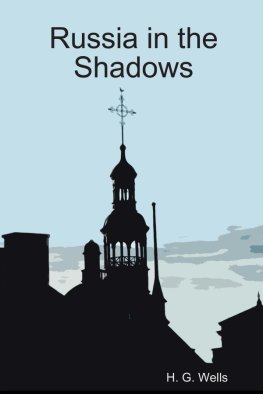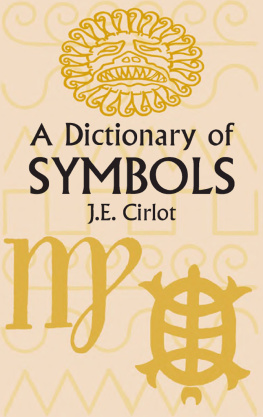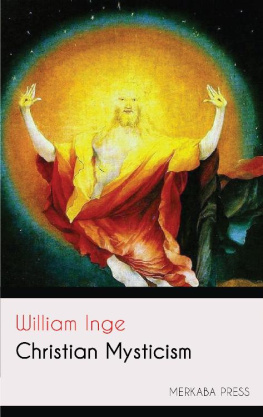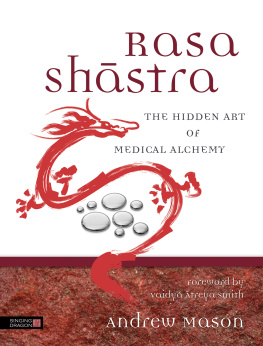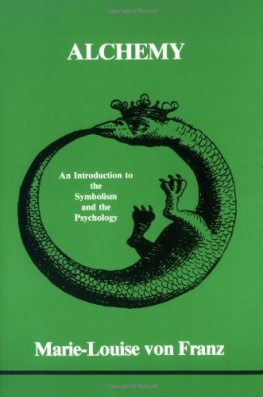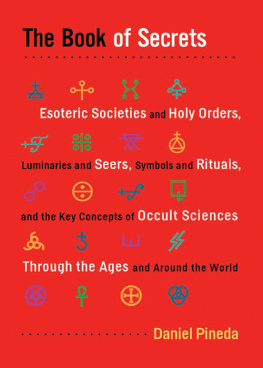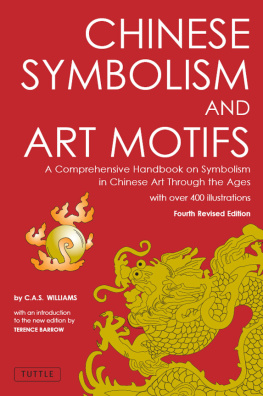Herbert Silberer - Hidden Symbolism of Alchemy and the Occult Arts
Here you can read online Herbert Silberer - Hidden Symbolism of Alchemy and the Occult Arts full text of the book (entire story) in english for free. Download pdf and epub, get meaning, cover and reviews about this ebook. year: 2009, publisher: Project Gutenberg, genre: Science. Description of the work, (preface) as well as reviews are available. Best literature library LitArk.com created for fans of good reading and offers a wide selection of genres:
Romance novel
Science fiction
Adventure
Detective
Science
History
Home and family
Prose
Art
Politics
Computer
Non-fiction
Religion
Business
Children
Humor
Choose a favorite category and find really read worthwhile books. Enjoy immersion in the world of imagination, feel the emotions of the characters or learn something new for yourself, make an fascinating discovery.
- Book:Hidden Symbolism of Alchemy and the Occult Arts
- Author:
- Publisher:Project Gutenberg
- Genre:
- Year:2009
- Rating:5 / 5
- Favourites:Add to favourites
- Your mark:
- 100
- 1
- 2
- 3
- 4
- 5
Hidden Symbolism of Alchemy and the Occult Arts: summary, description and annotation
We offer to read an annotation, description, summary or preface (depends on what the author of the book "Hidden Symbolism of Alchemy and the Occult Arts" wrote himself). If you haven't found the necessary information about the book — write in the comments, we will try to find it.
Hidden Symbolism of Alchemy and the Occult Arts — read online for free the complete book (whole text) full work
Below is the text of the book, divided by pages. System saving the place of the last page read, allows you to conveniently read the book "Hidden Symbolism of Alchemy and the Occult Arts" online for free, without having to search again every time where you left off. Put a bookmark, and you can go to the page where you finished reading at any time.
Font size:
Interval:
Bookmark:
Title: Hidden Symbolism of Alchemy and the Occult Arts
Author: Herbert Silberer
Translator: Smith Ely Jelliffe
Release date: January 9, 2009 [eBook #27755]
Language: English
Hidden Symbolism of
ALCHEMY and the OCCULT ARTS
(Formerly titled: Problems of Mysticism and Its Symbolism )
by Dr. Herbert Silberer
Translated by Smith Ely Jelliffe, M.D., Ph.D.
Dover Publications, Inc.
New York
1971
This Dover edition, first published in 1971, is anunabridged and unaltered republication of the workoriginally published by Moffat, Yard and Company,New York, in 1917 under the title Problems ofMysticism and its Symbolism .
International Standard Book Number: 0-486-20972-5
Library of Congress Catalog Card Number: 74-176356
Prominent among the stones of a fireplace in mycountry den, one large rounded giant stands out. Itwas bourne by the glacial streams from a morenorthern resting place and is marked by a fossil ofa mollusk that inhabited northern seas many millionyears ago. Yet in spite of the eons of time thathave passed it can be compared with specimens ofmollusks that live to-day. Down through the countlesscenturies the living stream has carved its structuralhabitations in much the same form. The scienceof Paleontology has collected this history andhas attempted a reconstruction of life from its beginnings.
The same principle here illustrated is true for thethought-life of mankind. The forms in which ithas been preserved however are not so evident.The structuralizations are not so definite. Ifthey were, evolution would not have been possiblefor the living stream of energy which is utilized bymind-stuff cannot be confined if it would advance tomore complex integrations. Hence the products ofmind in evolution are more plasticmore subtle [pg iv] and more changing. They are to be found in themyths and the folk-lore of ancient peoples, thepoetry, dramatic art, and the language of later races.From age to age however the strivings continue thesame. The living vessels must continue and theproducts express the most fundamental strivings, invarying though related forms.
We thus arrive at a science which may be calledpaleo-psychology. Its fossils are the thought-formsthroughout the ages, and such a science seeks to showfundamental likenesses behind the more superficialdissimilarities.
The present work is a contribution to such a sciencein that it shows the essential relationships ofwhat is found in the unconscious of present day mankindto many forms of thinking of the middle ages.These same trends are present to-day in all of usthough hidden behind a different set of structuralterms, utilizing different mechanisms for energy expression.
The unceasing complexity of life's accumulationshas created a great principle for energy expressionitis termed sublimationand in popular parlancerepresents the spiritual striving of mankindtowards the perfecting of a relation with the worldof realitythe environmentwhich shall meanhuman happiness in its truest sense. One of the [pg v] products of this sublimation tendency is called Mysticism.This work would seek to aid us to an understandingof this manifestation of human conduct asexpressed in concrete or contemplated action throughthought. It does so by the comparative method,and it is for this reason I have been led to presentit to an English reading public.
Much of the strange and outre, as well as the commonplace,in human activity conceals energy transformationsof inestimable value in the work of sublimation.The race would go mad without it. Itsometimes does even with it, a sign that sublimationis still imperfect and that the race is far from beingspiritually well. A comprehension of the principleshere involved would further the spread of sympathyfor all forms of thinking and tend to further spiritualhealth in such mutual comprehension of theneeds of others and of the forms taken by sublimationprocesses.
For the actual work of translation, I wish to expressmy obligations to friends Wilfred Lay, andLeo Stein. Without their generous and gifted assistanceI would not have been able to accomplishthe task.
Smith Ely Jelliffe , M.D.
New York , Oct. 27, 1917.
In an old book I discovered an extraordinarynarrative entitled Parabola. I take it as the startingpoint of my observations because it affords awelcome guide. In the endeavor to understand theparable and get a psychological insight into it, weare led on to journey through these very realms offancy, into which I should like to conduct the reader.At the end of our journey we shall have acquired,with the understanding of the first example, theknowledge of certain psychical laws.
I shall, then, without further prelude introducethe example, and purposely avoid at the outset mentioningthe title of the old book so that the readermay be in a position to allow the narrative to affecthim without any preconceived ideas. Explanatoryinterpolations in the text, which come from me, Idistinguish with square brackets.
[1]. As once I strolled in a fair forest, young and green,and contemplated the painfulness of this life, and lamentedhow through the dire fall of our first parents we inherited [pg 002] such misery and distress, I chanced, while thinking thesethoughts, to depart from the usual path, and found myself,I know not how, on a narrow foot path that was rough,untrodden and impassable, and overgrown with so muchunderbrush and bushes that it was easy to see it was verylittle used. Therefore I was dismayed and would gladlyhave gone back, but it was not in my power to do so, sincea strong wind so powerfully blew me on, that I could rathertake ten steps in advance than one backward.
[2]. Therefore I had to go on and not mind the roughwalking.
[3]. After I had advanced a good while I came finally toa lovely meadow hedged about with a round circle of fruitbearing trees, and called by the dwellers Pratum felicitatis [the meadow of felicity], I was in the midst of a companyof old men with beards as gray as ice, except for onewho was quite a young man with a pointed black beard.Also there was among them one whose name was well knownto me, but his visage I could not yet see, who was stillyounger, and they debated on all kinds of subjects, particularlyabout a great and lofty mystery, hidden in Nature,which God kept concealed from the great world, and revealedto only a few who loved him.
[4]. I listened long and their discourse pleased me well,only some would break forth from restraint, not touchingupon the matter or work, but what touched upon the parables,similitudes and other parerga, in which they followedthe poetic fancies of Aristotle, Pliny and others which theone had copied from the other. So I could contain myselfno longer and mixed in my own mustard, [put in my ownword], refuted such trivial things from experience, and themajority sided with me, examined me in their faculty andmade it quite hot for me. However the foundation of myknowledge was so good, that I passed with all honors, whereupon [pg 003] they all were amazed, unanimously included and admittedme in their collegium, of which I was heartily glad.
Font size:
Interval:
Bookmark:
Similar books «Hidden Symbolism of Alchemy and the Occult Arts»
Look at similar books to Hidden Symbolism of Alchemy and the Occult Arts. We have selected literature similar in name and meaning in the hope of providing readers with more options to find new, interesting, not yet read works.
Discussion, reviews of the book Hidden Symbolism of Alchemy and the Occult Arts and just readers' own opinions. Leave your comments, write what you think about the work, its meaning or the main characters. Specify what exactly you liked and what you didn't like, and why you think so.


